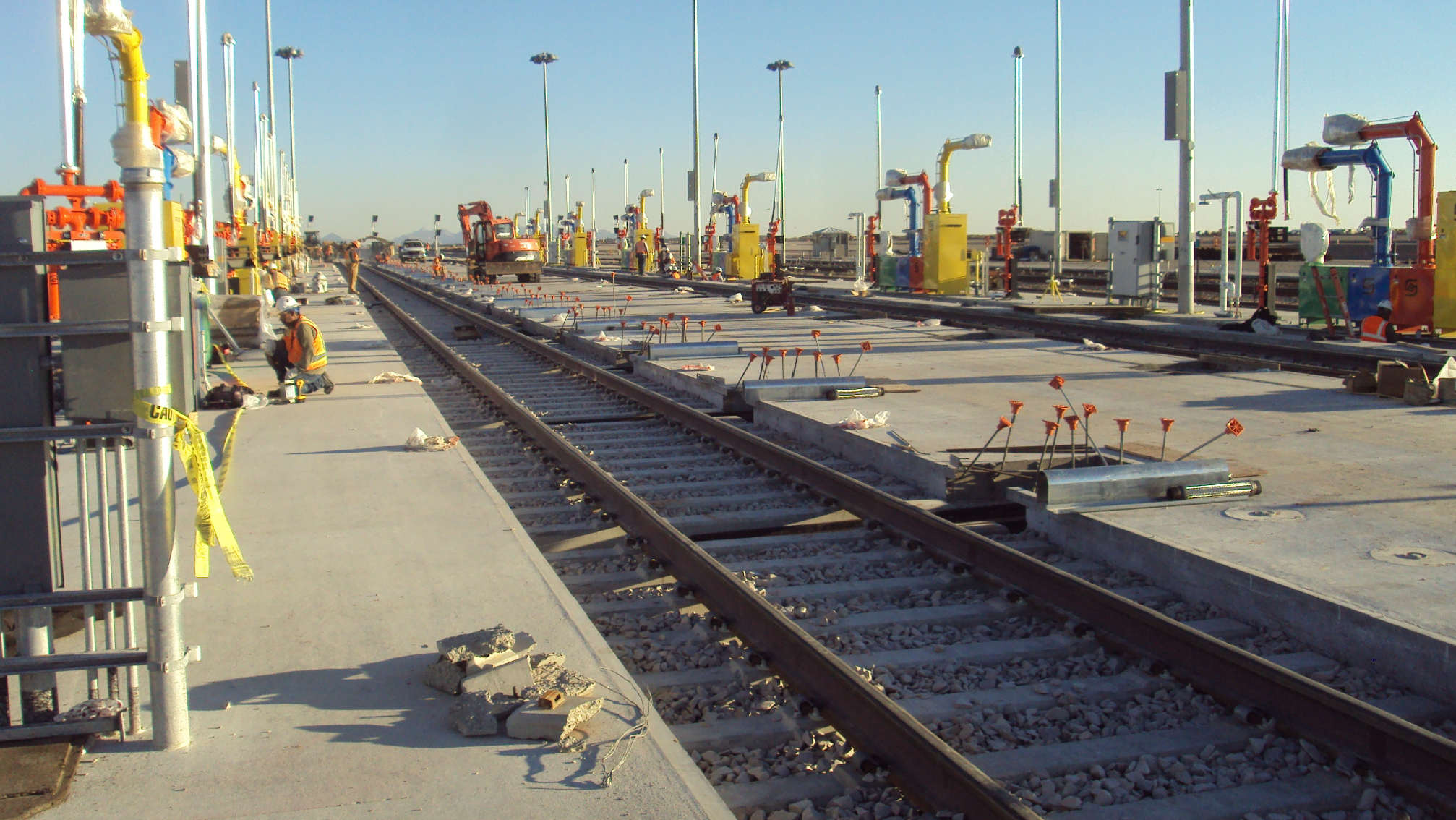Features & Highlights
- 12-mile long project
- 26 buildings, intermodal and fuel facility, underground utilities and concrete paving
- Self-performed site civil, concrete and mechanical scopes
- Finished under budget and a year ahead of schedule
Project Overview
Sundt’s $192 million contract for a significant portion of the Santa Teresa Rail Facility in New Mexico was carefully planned and constructed to meet Union Pacific’s needs for the next 50-100 years. Santa Teresa is more a Railroad City than a single facility, with over 26 buildings, fueling station, crew change areas, switching yard and an intermodal ramp. Not only did the new facility add 600 jobs, but it bolsters international trade, improves freeway congestion and was completed a year ahead of schedule.
Enormous quantities of materials were required for the construction of this facility. To bring the Santa Teresa Terminal to life, approximately 6 million cubic yards of cut and 4 million cubic yards of fill over the 11.7-mile-long and 0.8-mile-wide footprint needed to be moved. More than 12 miles of UP-constructed roads and 5.7 miles of State of New Mexico-constructed roads now provide access to the facility. Approximately 2.5 miles of each utility including electrical, water, and sewer lines were required to connect the new facility to local utilities.
The qualities that make the rail facility the ideal location for Union Pacific’s new fueling and maintenance facility – vast, undeveloped acreage and the ability to start from scratch with all new, modern technology – also made it extremely challenging from a construction standpoint. The project’s remote location (2,200 acres in the middle of the New Mexico desert) created difficulties for procuring and delivering materials and labor for the project’s unusually diverse scope of work.
Sundt worked with the local chamber of commerce and Small Business Administration to reach out to local businesses and held multiple training sessions for subcontractors to learn skills such as project management, scheduling, estimating, and understanding insurance and bonding. Through community outreach efforts, Sundt connected with the local subcontracting community and left behind an elevated safety culture. Sundt also imported a skilled labor force to perform work with its own crews. Together, the team was able to manage the project’s tight schedule and achieve its two key milestones (completion of the fuel facility, followed by completion of intermodal facility) by working six to seven days a week throughout the entire project.
The facility allowed Union Pacific to significantly expand its intermodal business, improve efficiency and better serve its customers. For example, in the old intermodal facility in El Paso, it would take approximately 30 minutes to process just one shipping container. Thanks to new technology and improved facilities, that entire half-hour procedure has been reduced to just a couple of minutes at Santa Teresa. The new intermodal facility also promotes international trade, thanks to its size, sophistication, and location just five miles north of the U.S./Mexico border. Sixty percent of the business at the new intermodal facility comes from Mexico, compared with just 20 percent at the old facility in El Paso.
Contacts
Awards & Accolades
2014 Dr. William W. Hay Award, American Railway Engineering and Maintenance-of-Way Association
